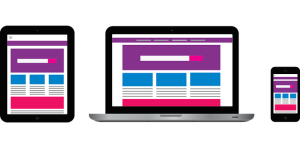Effective web design is more crucial than ever in an increasingly digital world, where first impressions are often formed within seconds. A well-designed website captivates users and enhances usability, encouraging them to explore further and engage with content. However, numerous design missteps can thwart this potential and lead to higher bounce rates and dissatisfied visitors. Understanding the common pitfalls in web design is essential for creating an intuitive, user-friendly experience that meets the needs of your audience. By identifying and addressing these errors, designers can pave the way for a successful online presence that resonates with users and keeps them returning for more.

Neglecting SEO Best Practices
A beautifully designed website is useless if potential visitors can’t find it. Designers and developers must include meta tags, alt attributes for images, and keyword-optimized content. Proper site navigation and clean URLs boost search rankings and user experience. By prioritizing SEO from the start, businesses can drive traffic to their site and achieve marketing goals. Embracing strategies from companies such as Savage web design can further enhance these efforts, ensuring a powerful online presence that attracts and retains users effectively. Neglecting SEO best practices can lead to an attractive but ineffective website, limiting its potential and hindering success.

Overwhelming Visuals
While visuals can enhance a website’s aesthetic appeal, too many images or videos can be overwhelming and distracting for users. Large file sizes also contribute to longer page load times, which can frustrate visitors and cause them to leave the site prematurely. Designers should aim for a balance between visual elements and content, making sure they complement each other rather than compete for attention. Optimizing images and keeping file sizes small is crucial for faster loading times and better user experience.
Lack of Consistency
Consistency in web design is crucial for a cohesive user experience and building visitor trust. When fonts, colors, button styles, and layouts vary across pages, it can confuse. Users expect a uniform experience, and inconsistency disrupts their interaction with the site. Designers should create a clear style guide for visual and functional elements. Consistent design improves aesthetics and ensures users can intuitively engage with the content, leading to better retention and satisfaction.
Poor Navigation
Navigation is a vital aspect of user experience, and poor navigation can frustrate visitors. Users should be able to navigate through the site quickly and easily, finding what they need without getting lost or confused. Designers must pay special attention to menu placement, labeling, and organization, ensuring they align with the user’s natural flow of information retrieval. Implementing search bars, breadcrumb trails, and clear calls-to-action can also improve navigation and overall usability.
Slow Loading Times
As attention spans shrink in today’s fast-paced world, users need more patience for websites that take too long to load. It is crucial to optimize the website design for fast loading times to keep visitors engaged and prevent them from leaving before fully exploring the content. Factors such as large image files, excessive use of plugins or scripts, and unoptimized code can significantly slow down a website. Designers should prioritize performance by compressing images, minimizing HTTP requests, and keeping code clean and efficient. By focusing on speed and efficiency, designers can create a streamlined experience that encourages users to stay and explore the website further.
Poor Readability
Effective web design not only involves visual appeal but also prioritizes the readability of content. Suppose text is challenging to read due to small font sizes or lack of contrast between the text and background; users are less likely to engage with the content. Designers should consider font type, size, spacing, and color contrast when creating a website layout. Additionally, incorporating ample white space can enhance readability by giving the eye a break and allowing for better focus on content. By making text easily digestible for users, designers can ensure their message is effectively communicated and understood.
Lack of White Space
As mentioned above, white space is essential for readability and creating a visually appealing layout. While some designers may feel that every inch of the website must be filled with content or design elements, this can lead to a cluttered and overwhelming user experience. White space helps to create balance within a design and draw attention to essential elements on the page. By incorporating ample white space throughout the website, designers can enhance the overall aesthetic while also improving usability by preventing users from feeling overwhelmed and allowing them to focus on crucial information.
Avoiding these common web design errors is crucial for creating a successful online presence that resonates with users and meets their needs. By prioritizing usability and consistently evaluating and addressing design flaws, designers can ensure a positive user experience that keeps visitors engaged and returning for more. Remember, great web design is a continuous improvement process, so always strive to identify and address any potential issues to achieve the best possible results. So, it’s important to remember these tips when designing a website for success.
